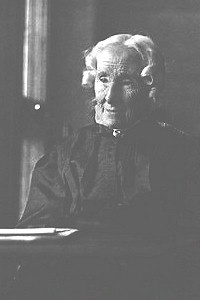In the Old Testament, children either ask or are told about the Exodus from Egypt in four places: Deut. 6:20; Exodus 12:26, 13:8, 14. Based on this, the Rabbis created a method of teaching the story of the Exodus that was individualized:
The haggadah speaks of four children: wise, wicked, simple, and one who does not know how to ask. It stresses that by paying close attention to the manner way in which a person asks a question, one can gain an insight into the individual’s character and prepare a suitable reply. (Of course, this mandate to teach one’s children according to their ability applies equally to girls.)[1]
The Wise Child asks insightful questions and should be answered with precise and explicit information that satisfies his quest for knowledge. On the other hand, the Wicked Child requires a sharp answer to “set his teeth on edge.” “We celebrate the Passover because of what God for us when we went out of Egypt.” In other words, if you would have been there, you would have been left behind to labor as a slave making mud bricks because you do not consider yourself one of us.
There is some debate about the character of the Simple Child. The Hebrew word “tam,” is “usually translated as the slightly derogatory ‘simple,’ it more probably is meant as a praiseworthy characteristic, as in the verse commanding the Jew to be tam (wholehearted) with the Lord your God (Deut. 18:13).”[2] Jesus said nearly the same thing: “22 “The eye is the lamp of the body. So, if your eye is healthy, your whole body will be full of light, 23 but if your eye is bad, your whole body will be full of darkness. If then the light in you is darkness, how great is the darkness!” (Matthew 6:22, 23) The word “healthy” literally means “being motivated by singleness of purpose so as to be open and aboveboard, single, without guile, sincere, straightforward.”[3]
The final child, the one who does not even know how to ask because he doesn’t even realize there are questions he should ask, is taught with care. “The haggadah begins its discussion of this child with the words ‘at p’tach lo’ (you should begin for him). … This suggests that this child should be approached with the gentle understanding and warmth generally associated with the mother. It is necessary to patiently encourage the child to formulate questions and then provide answers at a level that the child can comprehend.”
Shlomo Riskin cites a profound interpretation ascribed to Joseph Isaac Schneerson, a former Lubavitcher rebbe:
The Four Children represent the four generations of the American experience. The Wise Child represents the European roots, the generation of the grandparents who came to America with beard and earlocks, dressed in shtreimel and kapote, steeped in piety, with a love for learning and profound knowledge of the Jewish tradition. Their progeny (the Wicked Child), brought up within the American “melting pot,” rejected his parent’s customs and ways of thought … Turning his back on the glories of the Jewish tradition, this child often became successful in business but was cynical in his outlook. The third generation, the Simple Child, is confused. He watched his grandfather making Kiddush on Friday night and his father standing by silently, perhaps resentfully, impatient to prepare for business on Saturday morning … The fourth generation, the Child Who Does Not Know How to Ask, offspring of the Simple Child, is the greatest tragedy of all. He was born after his great-grandparents had died. He knows only his totally assimilated grandfather (Wicked Child) and his religiously confused father … This is our mute American generation, the generation who thought it was someone’s birthday when she saw her great-grandmother lighting the festival candles.
Riskin adds that there is also a fifth generation, so far removed from Judaism that it is unaware that it is Passover. At least the wicked child is attending the seder, though he cannot fathom how it relates to his life, as is the one who does not know how to ask, despite the fact that he finds it beyond his understanding. Tragically, an increasing number of American Jews are not even present at the seder. When opening the door for Elijah the Prophet, we should also keep it open for those masses of assimilated Jews who have not yet entered. In this way, Elijah can fulfill the promise “to reconcile parents with children and children with their parents” (Mal. 3:24). These fifth-generation children must be made aware of their lost heritage before we can dare expect the redemption of the Messianic Age.[4]
Perhaps the same can be said of the Restoration Movement. Those of the first generation were excited about their faith. They searched the Bible diligently and practiced their faith radically. The second generation understood the faith of their fathers, but they began codifying their parents discoveries rather than searching on their own. The third generation was steeped in tradition and nostalgia, while to the fourth generation it all seemed rather old-fashioned and hardly relevant. Is it no wonder the fifth generation seems confused and seeks something their great-great-grandparents knew?
[1] Eisenberg, R. L. (2004). The JPS guide to Jewish traditions (1st ed., p. 279). Philadelphia: The Jewish Publication Society.
[2] Ibid.
[3] Arndt, W., Danker, F. W., & Bauer, W. (2000). A Greek-English lexicon of the New Testament and other early Christian literature (3rd ed., p. 104). Chicago: University of Chicago Press.
[4] Eisenberg.



